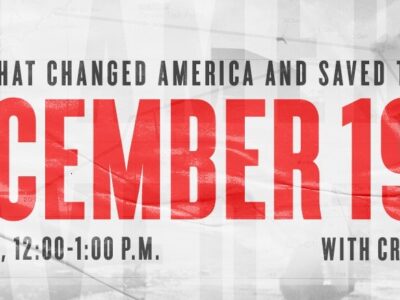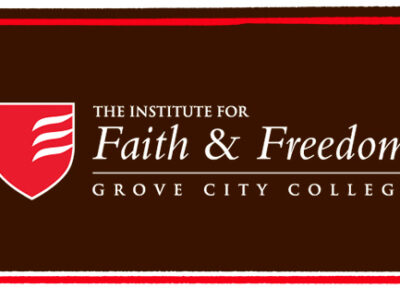
In November 1971, after serving a year as an intelligence officer supporting the secret American war in Laos, I returned to an assignment in the Intelligence Early Warning Center (INEW) at Headquarters, Strategic Air Command (SAC), near Omaha. The INEW office attached to the SAC War Room was buried three stories underground in a concrete and lead-sheathed vault behind massive steel doors. From there SAC could direct global Armageddon while (hopefully) withstanding 30 or more nuclear strikes.
When I arrived in late 1971, the senior-officer “old hands” at SAC had been there as captains and majors in October 1962. They remembered—and made sure we young officers learned—the chilling reality of being at nuclear ground zero during the Cuban missile crisis of October 1962.
At the height of that crisis, the Joint Chiefs of Staff, including Air Force Chief of Staff and former SAC Commander-in-Chief Gen. Curtis E. LeMay, urged a preemptive attack on Soviet medium-range ballistic missile sites in Cuba and IL-28 twin-engine bombers sitting on runways only 90 miles from the U.S. mainland. The massive doors to the SAC’s War Room were closed and the vault pressurized. No one could enter or leave Offutt Air Force Base; no off-base communication, not even with family.
At ICBM sites across the American northwest, newly installed Minuteman solid-fueled missiles prepared for launch. Bomber crews at SAC bases sat in their planes, nuclear weapons on board. If the “balloon went up,” within 15 minutes they would be on the way to targets in the Soviet Union. A number of B-52s hovered at their Fail Safe points just outside Soviet radar coverage. These planes would proceed to their targets. Under the best of circumstances, 10 to 20 million Americans would die. The USSR would be obliterated.
The Strategic Air Command remained perpetually at Defense Condition Three (DEFCON-3) while the rest of the U.S. military normally stayed at the lower level DEFCON-4. When the president ordered the armed forces to DEFCON-3, the Strategic Air Command automatically went to DEFCON-2. At that level, SAC was “locked and loaded.” DEFCON-1 initiated the “Go Code.” Go codes changed every 12 hours at Headquarters SAC. A SAC general officer carried an identical code aboard SAC’s Airborne Command and Control Center; a backup in case three stories of concrete and steel proved vulnerable. In October 1973, when President Richard M. Nixon ordered all military forces to DEFCON-3 during the Yom Kippur War in the Middle East, SAC went to DEFCON-2.
As senior watch officer in INEW, I made an after midnight secure phone call to SAC commander Gen. John C. Meyer. “Sir, this is Captain Tilford in the SAC Warning Center. We are assembling SAC battle staff. This is no drill.” He replied, “I’m on the way.” I swallowed hard.
In October 1973, when I phoned General Meyer, the White House and the Kremlin were already communicating to resolve an issue that avoided Armageddon. Communication, some might say “collusion,” saved the world. Eleven years earlier, in October 1962, no such process existed.
Twelve days into the 1962 Cuban missile crisis, President John F. Kennedy asked his speech writer Ted Sorensen to prepare two addresses: one informed the American people we were at war and the other stated the issue had resolved peacefully. Talking with Russians was key.
ABC News’s John Scali knew that his neighbor and friend Alexander Fomin, a Soviet TASS journalist assigned to Washington, was also a KGB officer. The correct assumption was that the every TASS journalist was KGB and those assigned to Washington, being at the top of their game, had access to the Kremlin.
Premier Nikita Khrushchev, under pressure from hardliner generals, needed a way out. American intelligence knew the limitations of Soviet nuclear forces compelled Khrushchev to place medium range missiles and bombers in Cuba. If we offered to withdraw our medium range missiles from Turkey (that decision had already been made) then Khrushchev could claim a quid-pro-quo victory and offer to withdraw Soviet missiles and bombers from Cuba.
John Scali, working with Alexander Fomin, offered to set up a meeting between the White House and the Soviet Ambassador Anatoly Dobrynin. At this desperate moment, President Kennedy sent his brother, Attorney General Robert Kennedy, to a dark-of-night secret meeting inside the Soviet embassy to pass a message to Khrushchev through Ambassador Dobrynin. The United States offered to withdraw medium range Jupiter missiles from Turkey if the Soviets withdrew their missiles and bombers from Cuba. For this to work, the deal must remain secret. It worked.
Collusion, meaning many things, remains a form of communication. Secrecy is imperative at the highest levels in international relations. Secrecy in communications with world leaders is a necessary presidential imperative essential to preventing crises going catastrophic. We can be very thankful that collusion worked twice. It has worked many other times without our knowing it.




